| [1] | I Sharada dhadse, Pramila kumara, L J Bhagia, Fly ash characterization, utilization and government initiatives in India-A review, Journal of Scientific & industrial research, vol-67, (2008), pp. 11-18. |
| [2] | M. Ahmaruzzaman, A review on the utilization of fly ash, Progress in Energy and Combustion Science, 36 (2010), pp. 327–363. |
| [3] | N. Bouzoubaa, B. Fournier, Current situation with the production and use of supplementary cementitious materials (SCMs) in concrete construction in Canada, Can. J. Civ. Eng. 32 (2005), pp. 129–143. |
| [4] | P.K. Rohatgi, D. Weiss, N. Gupta, Applications of fly ash in synthesizing low-cost MMCs for Automotive and Other Applications, JOM 58 (2006), pp. 71–76. |
| [5] | K. Tishmack, P.E. Burns, The chemistry and mineralogy of coal and coal combustion products, Geol. Soc. Special Pub. 236 (2004), pp. 223–246. |
| [6] | J. Sobczak, Z. Slawinski, N. Sobczak, P. Darlak, R. Asthana, P. K. Rohatgi, Thermal fatigue resistance of discontinuously reinforced cast aluminum-matrix composites, J. Mater. Eng. Perform. 11 (2002), pp. 595–602. |
| [7] | P.K. Rohatgi, N. Gupta, S. Alaraj, Thermal expansion of aluminum-fly ash Cenosphere composites synthesized by pressure infiltration technique, J. Comp. Mater. 40 (2006), pp. 1163–1174. |
| [8] | M. Ramachandra, K. Radhakrishna, Effect of reinforcement of fly ash on sliding wear, slurry erosive wear and corrosive behaviour of aluminum matrix composite, Wear 262 (2007), pp. 1450–1462. |
| [9] | N. Sobczak, J. Sobczak, J. Morgiel, L. Stobierski, TEM characterization of the reaction products in aluminium–fly ash couples, Materials Chemistry and Physics 81 (2003), pp. 296–300. |
| [10] | Bienia, M. Walczak, B. Surowska, J. Sobczaka, Microstructure and corrosion behaviour of aluminum fly ash composites, Journal of Optoelectronics and Advanced Materials Vol. 5, No. 2, June 2003, pp. 493 – 502. |
| [11] | J.W. Kaczmara, K. Pietrzakb, W. WoosinAski, The production and application of metal matrix composite materials, Journal of Materials Processing Technology 106 (2000), pp. 58-67. |
| [12] | Grigorios itskos, P.K.Rohatgi, Angeliki Moutsatsou, Hans J. Roven, Benjamin F.Schultz, Nikolaos Koukouzas, Charalampos Vasilatos, incorporation of high-Ca fly ash particles into A356 Al by stir casting technique and characterization of the fabricated composites, world of coal ash(WOCA) conference May 9-12, 2011, USA |
| [13] | P. Shanmughasundaram, R. Subramanian, G. Prabhu, Some Studies on Aluminium – Fly Ash Composites Fabricated by Two Step Stir Casting Method, European Journal of Scientific Research, ISSN 1450-216X, Vol.63 No.2 (2011), pp.204-218. |
| [14] | Rohatgia P. K., J. Kima K., Gupta N., Alaraj Simon, and A. Daoud, Compressive characteristics of A356/fly ash cenosphere composites synthesized by pressure infiltration technique, Composites: Part A 37 (2006), pp. 430–437. |
| [15] | E. Marin, M. Lekka, F. Andreatta, L. Fedrizzi, G. Itskos, A. Moutsatsou, N. Koukouzas, N. Kouloumbi, Electrochemical study of Aluminum Fly-ash composites obtained by powder metallurgy, Materials Characterization, Volume 69, July 2012, pp.16-30. |
| [16] | J. David Raja Selvam, D.S. Robinson Smart, I. Dinaharan Microstructure and some mechanical properties of fly ash particulate reinforced AA6061 aluminum alloy composites prepared by compocasting, Materials & Design, Volume 49, August 2013, pp. 28-34. |
| [17] | G M Luo et al. “Microstructure and mechanical properties of spray deposited ultra-fine carbon steel after hot rolling” Materials characterization 52(2004), pp. 263-268. |
| [18] | Kwagjun Euh, Suk Bong Kung, “Effect of rolling on the thermo-physical properties of SiCp/Al composites fabricated by plasma spraying” Materials science and Engg. A 395(2005), pp. 47-52. |
| [19] | Palash Poddar, V.C. Srivastava, P.K. De, K.L. Sahoo, Processing and mechanical properties of SiC reinforced cast magnesium matrix composites by stir casting process, Materials Science and Engineering A 460–461 (2007), pp. 357–364. |
| [20] | Mahendra.K.V and Radhakrishna.K , Fabrication of Al–4.5% Cu alloy with fly ash metal matrix composites and its characterization, Materials Science-Poland, Vol. 25, No. 1, 2007, pp. 57-68. |
| [21] | Sudarshan, Surappa M.K., Synthesis of fly ash particle reinforced A356 Alcomposites and their characterization, Materials Science and Engineering A 480 (2008), pp. 117–124. |
| [22] | Rohatgi P. K., Gupta N., and Alaraj Somon, Thermal Expansion of Aluminum–Fly ash Cenosphere Composites Synthesized by Pressure Infiltration Technique, Journal of Composite materials, Vol. 40, No. 13(2006), pp.1163-1174. |
| [23] | Shujin Liang, Hongfei Sun, Zuyan Liu, Erde Wang, Mechanical properties and texture evolution during rolling process of an AZ31 Mg alloy, Journal of alloys and compounds 472(2009), pp. 127-132. |
| [24] | C. Goujon, P. Goeuriot, Solid state sintering and high temperature compression properties of Al-alloy5000/AlN nano composites, Mater. Sci.Eng. A 315 (2001), pp. 180-188. |
| [25] | P.R.S. Kumar, S. Kumaran, T. Srinivasa Rao, S. Natarajan, High temperature sliding wear behavior of press-extruded AA6061/fly ash composite, Materials Science and Engineering: A, Volume 527, Issue 6, 15 March 2010, pp. 1501-1509. |
| [26] | W.D. Fei, W.Z. Li, C.K. Yao, Hot rolling behaviors of whisker reinforced aluminum composites, J. Mater. Sci. 37 (2002), pp. 211-215. |
| [27] | M.Vedani, F.Deirico, E.Gariboldi, “Mechanical and fracture behaviour of aluminium-based discontinuously reinforced composites at hot working temperature” Composites science and technology 66(2006), pp. 343-349. |
| [28] | D.G.Morris, M.A.Munoz-Morris, “The effectiveness of equal channel angular pressing and rolling for refining microstructure and obtaining high strength in a Cu-Fe composite” Materials science and engg, A 528(2011), pp. 6293-6302. |
| [29] | R.E.Smallman, I.R.Harris, M.A. Duggan, “Microstructure and materials processing” Journal of materials processing technology, 63(1997), pp. 18-29. |
| [30] | Shafaat Ahmed, Q. Ahsan, A.S.W.Kurny, Effect of rolling on tensile flow and fracture of Al-4.5Cu-3.4Fe cast composite, journal of materials processing technology 182(2007), pp. 215-219. |
| [31] | Mervin.A.Herbert, R.Maiti. R.Mitra. M. Chakraborty, Wear behaviour of cast and mushy state rolled Al–4.5Cu alloy and in-situ Al4.5Cu–5TiB2 composite, Wear 265(2008), pp. 1606-1618. |
| [32] | S.Kumar, V.Subramanya Sarma, B.S.Murty, The influence of room temperature and cryogenic temperature rolling on the aging and wear behaviour of Al–4Cu–5TiB2 in situ composites, Journal of alloys and compounds 479(2009), pp. 268-273. |
| [33] | Sajjad Amirkhanlou, Mohammad Reza Rezaei, Behzad Niroumand, Mohammad Reza Toroghinejad, Refinement of microstructure and improvement of mechanical properties of Al/Al2O3 cast composite by accumulative roll bonding process, Materials Science and Engineering A 528 (2011), pp. 2548–2553. |
| [34] | I. A. Ibrahim, F. A. Mohamed, E. J. Lavernia, Particulate reinforced metal matrix composites - a review, Journal of Materials Science 26 (1991) 1137- 1156. |
| [35] | T.P.D. Rajan, R.M. Pillai, B.C. Pai, K.G. Satyanarayana, P.K. Rohatgi, Fabrication and characterisation ofAl–7Si–0.35Mg/fly ash metal matrix composites processed by different stir casting routes, Composites Science and Technology 67 (2007) 3369–3377. |
| [36] | M. Muratoglu, M. Aksoy, The effects of temperature on wear behaviours of Al–Cu alloy and Al–Cu/SiC composite, Materials Science and Engineering A282 (2000) 91–99. |
| [37] | Narasimha Murthy I., D. Venkata Rao, J. Babu Rao, Microstructure and mechanical properties of aluminum–fly ash nano composites made by ultrasonic method, Materials and Design 35 (2012), pp. 55–65. |
| [38] | Gosh PK, Rays S, Influence of process parameters on the porosity content in Al(Mg)-Al2O3 cast particulate composite produced by vortex method. AFS Trans 18 (1998), pp. 775-782. |
| [39] | Ilegbusi O J, Yang J, Porosity nucleation in metal matrix composites, Metal Mater Trans A 31 (2000), pp. 2069-2080. |
| [40] | J.C. Lee, K.N. Subramanian, The tensile properties of hot-rolled (Al2O3)p-Al composites, Mater. Sci. Eng. A 196 (1995), pp. 71–78. |
| [41] | K.K. Deng, K. Wu, X.J. Wang, Y.W. Wu, X.S. Hu, M.Y. Zheng, W.M. Gan, H.G. Brokmeier, Microstructure evolution and mechanical properties of a particulate reinforced magnesium matrix composites forged at elevated temperatures, Materials Science and Engineering: A 527(2010), pp. 1630-1635. |
| [42] | Sajjad Amirkhanlou, Mohammad Reza Rezaei, Behzad Niroumand, Mohammad Reza Toroghinejad, High- strength and highly-uniform composites produced by compo casting and cold rolling, Materials and Design 32(2011), pp. 2085-2090. |
| [43] | J.R. Brockenbrough, F.W. Zok, On the role of particle cracking in flow and fracture of metal matrix composites, Acta Metallurgica et Materialia, 43, (1995), pp. 11–20. |
| [44] | Zong BY, Derby B, Characterization of micro structural damage during plastic strain of a particulate –reinforced metal matrix composite at elevated temperature, Journal of Material Science 31 (1996), pp. 297-302. |
| [45] | Vedani M, Gariboldi E, Damage and ductility of particulate and short fibre Al-Al2O3 composites, Acta Mater 44 (1996), pp. 3077-3088. |
| [46] | G. N. Lokesh, M. Ramachandra, K. V. Mahendra, T. Sreenith, Characterization of Al-Cu alloy reinforced fly ash metal matrix composites by squeeze casting method, International Journal of Engineering, Science and Technology, Vol. 5, No. 4, 2013, pp. 71-79. |
| [47] | R. Jamaati, M.R. Toroghinejad, A. Najafizadeh, Manufacturing of high-strength aluminum/alumina composite by accumulative roll bonding, Mater. Sci. Eng. A 527 (2010), pp. 2720–2724. |
| [48] | Lendvai, J, The Structure of DC Cast Al-Fe and Al-Fe-Si Alloys, Material Science Forum, 1987, 13-14, pp. 101-120. |
| [49] | Griger, A., Lendvai, J., Stefaniay. V, Turmezey, T., On the Phase Diagram of Al-Fe and Al-Fe-Si Systems, Material Science Forum, 13-14, (1987), pp. 331-336. |




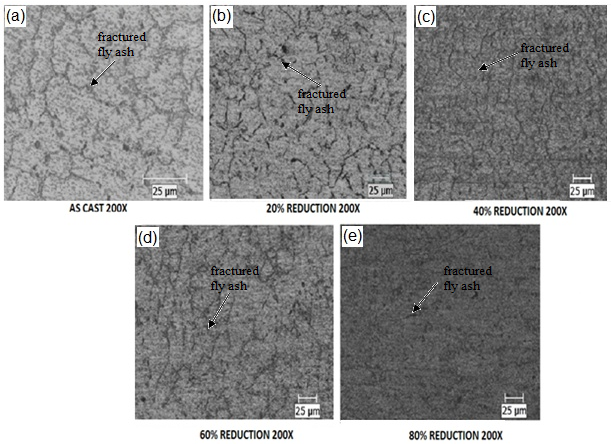


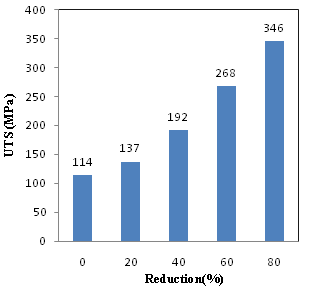
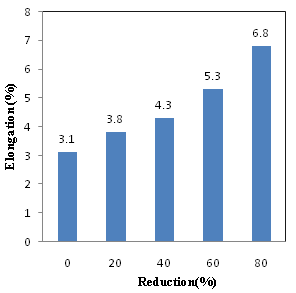

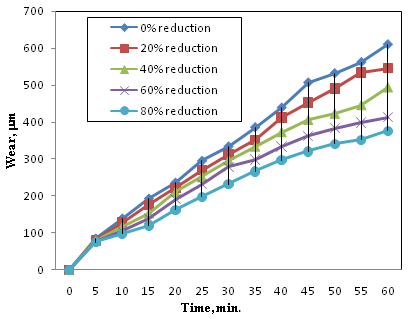

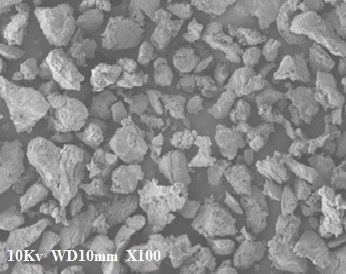
 Abstract
Abstract Reference
Reference Full-Text PDF
Full-Text PDF Full-text HTML
Full-text HTML